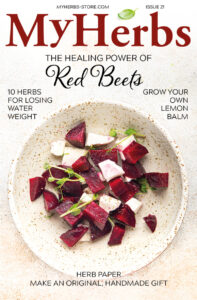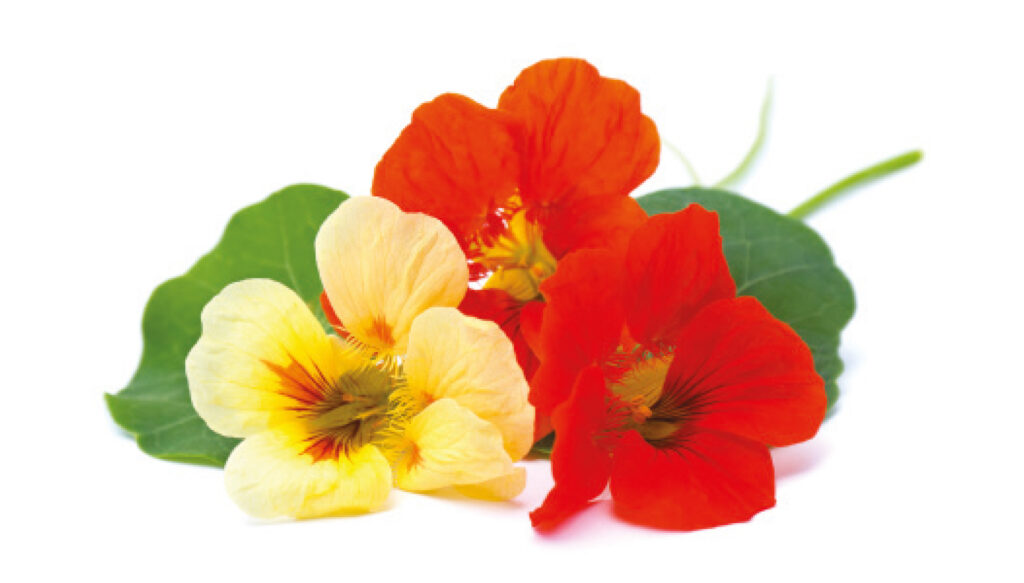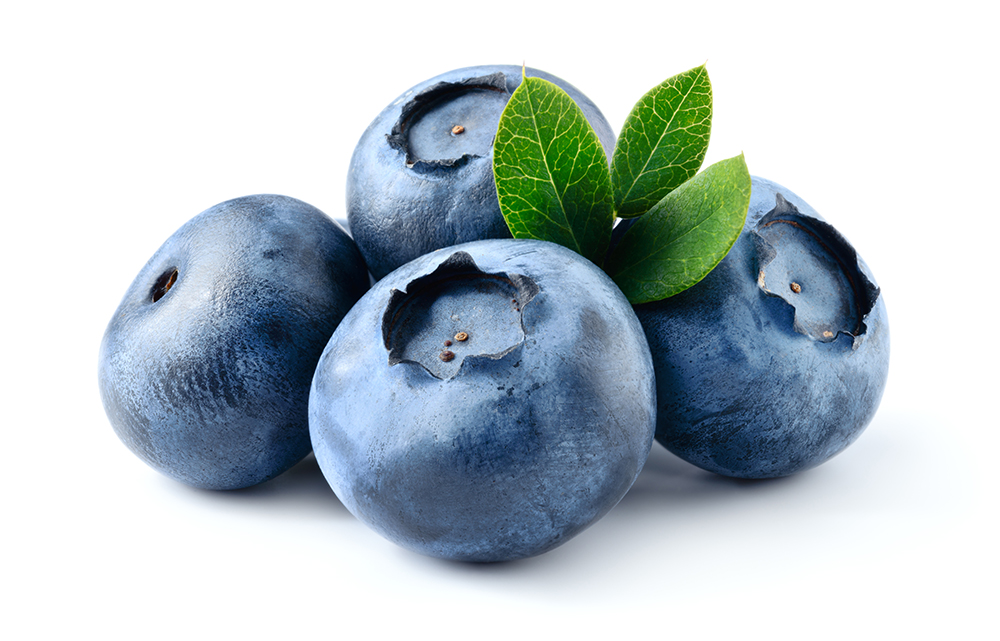Perhaps you didn’t realize, but your garden and nearby pockets of nature contain a variety of remedial plants with antibiotic effects. How can they be used, processed or even stored for the eventual winter flurries?
A summer garden and the natural surroundings offer us a myriad of helpful herbs that we can use as very effective natural antibiotics. Summer tonsillitis and urinal tract infections are relatively common inconveniences that occur during vacations. It is important to know what herbs to reach for so that you don’t need to use pills right away.

WHAT GROWS AROUND THE HOUSE
There are many plants with antibiotic effects. However, one cannot always use them as an alternative to prescribed medication. You shouldn’t rely on nasturtium or garlic in acute bacterial infections, like pneumonia, as these may pose genuine life-threatening situations. It is much better to prevent these scenarios – and for that you can use herbs. So what exactly can one find in a summer garden and how should they be used?

NASTURTIUM (Tropaeolum majus)
This herb is known from many a summer window box. It is well-known for its antibiotic effects. The circular leaves, orange blooms and buds can all be consumed. Even its seeds are used medicinally, in the making of tincture, which is often recommended in homeopathic dilution.
Nasturtium kills most bacteria: streptococci, staphylococci, E. Coli and even salmonella, and it disinfects the throat and urinal tract, hence its regular application in tonsillitis and urinary tract infections, which typically occur in summer. Even the fresh leaves have strong antibiotic effects and are often used in delicious summer salads. The plant’s fresh juice disinfects the skin, works against dandruff and enhances hair growth.
Internal use should be minimal as it may lead to irritation of the digestive system and kidneys. In children it is recommended only after the age of six. If you have a sore throat, feel free to pick several leaves and eat them.

OREGANO (Origanum vulgare)
Oregano is a well-known aromatic seasoning. It has strong antiseptic effects and works as an antibiotic and antimycotic, and even as an antidepressant. The plant is used in the form of tea or as seasoning in various meals; one may also use its very potent oil, both internally and externally.
Oregano treats coughs, digestive problems, fungus, various infections and allergies, eczema, skin inflammations and acne. It disinfects the entire digestive tract and alleviates diarrhea. Many people enjoy oregano wine or tincture. It is not recommended to use it internally for extended periods of time in large amounts; furthermore, the plant is not particularly suitable for pregnant or breastfeeding women.

MARIGOLD (Calendula officinalis)
Marigold ripens in window boxes and gardens during the summer. It is favored not only for its appearance, but also for its strong antibiotic and antimycotic properties. However, its scent is not particularly pleasant.
It is purely a women’s plant; its bloom is the symbol of the fight against breast cancer. It treats the liver and gallbladder, and helps against gall stones and bowel inflammations. It is present in various herbal mixtures that aid with digestion and feminine problems. Vaginal douching with calendula successfully treats all women’s infections. It may also be used externally to clean inflamed skin, eczemas and fungal infections, and can be used in baths. It is often found in the form of tincture, though more commonly as balm or oil.
Calendula balm is renowned as a form of medication, and can be made at home with Vaseline or shea butter.
Make at Home: Calendula Balm
Prepare some fresh calendula blooms, shea butter, a sealable container, some linen for straining, one medium and one small pot, a wooden spoon and water. Prepare a water bath and dissolve the shea butter in the smaller pot. Add the calendula blooms and cook them well in the dissolved base. Then let it infuse properly over a mild heat. It is important to have enough water in the water bath and to constantly stir the mixture. Quickly sieve the mixture through the linen into the prepared cups. The volume and choice of supplemental ingredients is up to you; there are multiple ways of preparing this balm and everyone should be able to work out their own way of doing it. It is also possible to add a bit of essential oil with disinfectant properties at the end – for example lavender or tea-tree.

BLACKBERRY (Rubus fruticosus)
Another forest fruit with antibiotic properties is blackberry. It is a common thorny bush with very tasty black fruits. However, it is not only the fruits that may be eaten; its leaves, too, are edible, especially in the making of a delicious tea.
The raspberry bush is a close relative, and its fruits and leaves are used in a similar manner. Blackberries can be eaten directly or lyophilized. They contain tannins, vitamin C, folic acid, iron and magnesium. It treats diarrhea, gynecological inflammations, rheumatism, anemia, kidney stones, colds, sore throats and a hoarse voice. It is not only a natural antibiotic, but also has antipyretic and analgesic properties.
Blackberries have a very wide spectrum of uses, and one may even use them in the making of remedial juice or wine. The fruits ripen in late summer, once blueberry season has passed.

BLUEBERRY (Vaccinium myrtillus)
These delicious dark fruits ripen in forests during summer. It is best to eat them as they are without thermally processing them, since that makes them lose many valuable materials. Should you need to store them, it is recommended that you freeze them. Another method is lyophilization, which is drying through freezing, which helps maintain the original flavor and number of vitamins and minerals. Blueberries contain tannins, B, A and C group vitamins, iron, magnesium, potassium, copper and zinc. They have strong antibiotic and disinfectant effects, which is why they are used in treating digestive system inflammations, and they also treat tonsillitis, urinary tract infections, help in losing weight and combating night blindness. They have an overall fortifying effect on the immune system and can be used against infections of all kinds.
Blueberries also contain rutin, which is good for blood vessels, so for example when combined with buckwheat they are a great rutin bomb for anyone in need of it. Apart from that, they have a general calming effect, and aid in suppressing withdrawal symptoms for those in rehabilitation programs. As well as eating the fruits, it is possible to prepare a delicious tea from them when dried, which is especially helpful for its disinfectant properties, especially in digestive tract problems. The dried leaves are particularly effective in preparing an infusion for diabetics, as it helps lower their blood levels.
Cranberry and fenberry are used similarly. They are considered natural antibiotics, since they, like blueberries, kill E. Coli bacteria and streptococci. They are most often used against tonsillitis and urinary tract infections. However, it is relatively difficult to get one’s hands on the heath family plants, which are protected and rare, so cranberry is often replaced with fenberry, due to the fact that it can be easily grown in the garden.


Leave a Reply